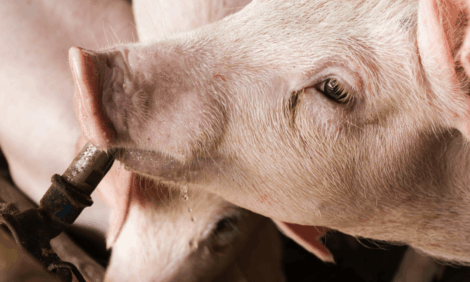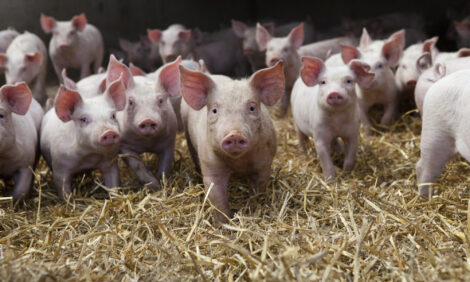



Management for High Sow Longevity
Early departures from the breeding herd are costly, according to this article from Hypor.The number of litters per sow lifetime is an important component of Weaning Capacity, and therefore maximizing sow longevity should be a key management objective in the breeding herd. Increasing the number of litters over the sow’s reproductive life by just 0.5 will improve Weaning Capacity by up to eight per cent. Unfortunately, culling rate and death loss is on the rise in many countries around the world, leading to reduced longevity (Table 1).

Both culling rate and death loss have increased between 2000 and 2007, except in Great Britain. One reason for the lower death loss in Britain could be that all sows are housed in group systems, the majority with solid floors and bedding. There are significant differences between countries, for example in Denmark between 1996 and 2006 culling rate increased from 44 per cent to 51 per cent, while sow death loss increased from around eight per cent to over 15 per cent. However, in France, average death loss has remained at about five per cent and culling rate around 38 per cent.
Possible Reasons for Reduced Longevity
There seems no doubt that the greater nutritional and physical strain on the sow as a result of the increased productivity that has occurred over the last 10 to 15 years is a major factor. Also, the decrease in gilt and sow backfat levels as a result of selective breeding for leaner, faster growing and efficient pigs, means that they have less tolerance to deficiencies in management, environment and nutrition.
Lean animals are more prone to physical injury, notably shoulder and leg abrasions, which may lead to culling. Another factor is the intensification of production systems leading to harsher conditions, which are more likely to lead to injury, combined with a lack of suitable hospital facilities to deal with sick, injured or disadvantaged gilts and sows. In most countries, increasingly stringent legislation on the transport of unfit animals means that more sows that would previously have been sold are now being destroyed on the farm.
Increasing Sow Longevity
Genetic influences
There are certainly differences in longevity due to genetics. Longevity and related factors are now becoming a more important part of genetic selection programmes.
Within the Hypor breeding programme, backfat is viewed as an optimum trait and the company does not focus on getting its sows as lean as can be, but rather aims for an optimal and uniform level of back fat. Overly lean sows tend to have more problems in regaining body condition after lactation and are more likely to suffer the so-called 'second litter dip'.
Additionally in the breeding programme, there is a balanced approach with the inclusion of traits related to robustness and longevity. Many generations of strong attention to conformation traits, especially feet and legs, has resulted in a sow that lasts longer and produces consistently well in intensive production environments.
In a further step, Hypor started estimating breeding values for 'staying power' as a direct measure of longevity. This trait focuses on the probability that a gilt once she has entered the herd, stays in production until parity 4. This trait exhibits a reasonable heritability and is clearly linked to the other traits that are known to influence longevity. Direct selection emphasis on this trait is expected to further improve this trait in our sows.
A benchmark survey of herds using Hypor sows shows that average sow loss (5.92 per cent) in those herds is below the Canadian industry average (9.2 per cent) given in Table 1.
Management of the young female
Herd recording data from a number of sources suggests that poor retention rate of young females over the first three parities is the primary reason for reduced longevity. Therefore management effort should be focused on ensuring that a high percentage of gilts reach the most productive 3 to 6 parity stage. Some of the management strategies that should be considered are:
- Implementing good acclimatisation procedures to provide adequate immunity to herd diseases
- Ensuring gilts are bred at a weight of 135 to 150 kg, to farrow at a weight of 180 to 190 kg (See: WC#3 Gilt management for maximum lifetime productivity)
- Avoiding overfeeding gilts in gestation because this reduces feed intake in first lactation (See: WC#5 Feeding the sow and gilt in gestation)
- Feeding a higher lysine lactation diet to gilts where possible, or to the whole herd (1.2 per cent total lysine)
- Maximising lactation feed intake through attention to pre-farrowing feed levels, room temperature, water availability, feed freshness, frequency of feeding and feed scale
- Feeding gilts and, if necessary, second parity sows 0.5 kg of a high protein/energy top dressing for the last seven days of lactation and from weaning to breeding
- Consider delaying breeding of weaned gilts by using Altrenogest: a 14-day treatment period has been shown to increase the number of embryos at day 50 by two.
- Ensuring that feed levels over each cycle are adequate to allow females to reach their genetically-determined mature body size at parity 4 to 5
Reducing culls and deaths for health reasons
Far too many young females leave the herd due to physical injury, loss of condition or lameness, leading to reduced longevity. It has been speculated that the lower backfat depth in today’s gilts is the cause of many of these problems. However, recent work in the UK (Figure 1) suggests that there is no relationship between backfat level at first breeding and the number of litters completed. Nevertheless, it appears that the level of backfat may have an impact on the level of injuries, especially shoulder lesions.

Danish work that measured backfat at farrowing showed that sows with less than 15 mm of backfat had a very high risk of shoulder abrasions, while those with a backfat measurement of 25 mm had a lower lactation feed intake and consequently higher bodyweight and backfat loss prior to weaning. This relationship will be especially relevant in the gilt, where feed intake during the suckling period is so critical to subsequent productivity. There is clearly a balance to be made between having gilts too fat at first farrowing and having sufficient fat cover to minimize injury.
The quality of flooring materials has a large influence on injury levels and the use of non-injurious materials combined with prompt repair of damaged flooring will help to reduce the incidence of injury. For gilts prior to first breeding, provision of high quality flooring, ideally with bedding, and sufficient space (minimum 1.4 square metres, 15 square feet) to allow exercise and development of strong legs and feet, will help to improve longevity.
Close attention to preventative health procedures and ensuring rapid detection and treatment of sick, injured and disadvantaged sows and gilts is crucial to reducing enforced culling and death loss. Recent research work in Denmark has highlighted the importance of hospital pens to speed up the recovery of sick or injured animals. Trials showed that it is possible to reduce the percentage of sows that die or have to be destroyed if there are sufficient hospital pens available and a treatment strategy is drawn up by the vet.
Preliminary results suggest that lameness was the primary cause (75 per cent of sows) for transfer to a hospital pen. Sows stayed in the hospital pen for an average of 22 days and 80 per cent of sows were able to return to the gestation pens or move to the farrowing house. Of the sows that were due for culling, there were 25 per cent fewer deaths or destroyed sows.
Conclusion
Sow longevity, and the factors that influence it, have not been given sufficient attention in the past and this is reflected in the reduced longevity noted in herd performance data from many countries. However, longevity has such a major influence on total lifetime production, or Weaning Capacity, that it justifies intense effort to improve it.
The key to this is focussing on management of the young female in order to maximise retention rate to third parity, resulting in a longer productive life and a high Weaning Capacity. From the improvement standpoint Hypor gives a lot of attention in the selection program to all those factors mentioned that influence longevity.








